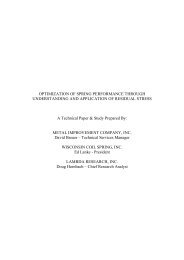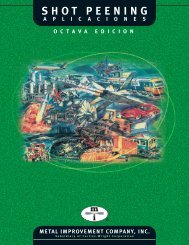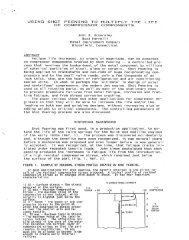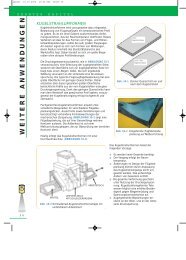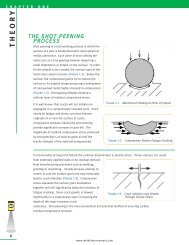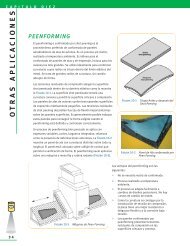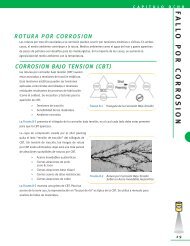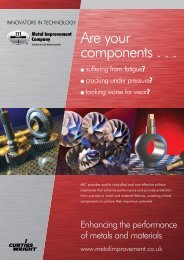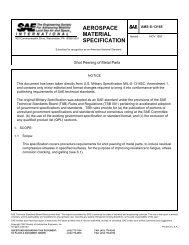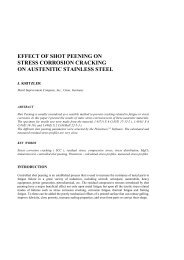MIC Green Book
MIC Green Book
MIC Green Book
You also want an ePaper? Increase the reach of your titles
YUMPU automatically turns print PDFs into web optimized ePapers that Google loves.
C H A P T E R T E N<br />
O THER APPLICATIO NS<br />
32<br />
PEEN FORMING<br />
Peen forming is the preferred method of forming aerodynamic<br />
contours into aircraft wingskins. It is a dieless forming process<br />
that is performed at room temperature. The process is ideal for<br />
forming wing and empennage panel shapes for even the largest<br />
aircraft. It is best suited for forming curvatures where the radii<br />
are within the elastic range of the metal. These are large bend<br />
radii without abrupt changes in contour.<br />
Residual compressive stress acts to elastically stretch the peened<br />
side as shown in Figure 10-1. The surface will bend or "arc"<br />
towards the peened side. The resulting curvature will force the<br />
lower surface into a compressive state. Typically aircraft<br />
wingskins have large surface area and thin cross sectional<br />
thickness. Therefore, significant forces are generated from the<br />
shot peening residual stress over this large surface area. The thin<br />
cross section is able to be manipulated into desired contours<br />
when the peen forming is properly engineered and controlled.<br />
A properly engineered peen forming procedure will compensate<br />
for varying curvature requirements, varying wingskin thickness,<br />
cutouts, reinforcements and pre-existing distortion. Figure 10-<br />
2 demonstrates a wingskin that has multiple contours along its<br />
length. The wingskin is positioned on a checking fixture that<br />
verifies correct contour.<br />
Peen forming is most often performed on a feed through, gantry<br />
type machine (Figure 10-3).<br />
Figure 10-3 Wingskin Forming Machine<br />
www.metalimprovement.com<br />
Figure 10-1 Thin Cross Section Before<br />
and After Shot Peening<br />
Figure 10-2 Checking Fixture for Verifying<br />
Peen Forming of Wingskin<br />
Peen forming has the following advantages:<br />
• No forming dies are required.<br />
• Process is performed at room<br />
temperature.<br />
• Wingskin design changes are easily<br />
accomplished by altering the peen<br />
forming procedure. There is no<br />
expensive modification of dies<br />
required.<br />
• All forming is accomplished using<br />
residual compressive stress. Peen<br />
formed parts exhibit increased<br />
resistance to flexural bending fatigue<br />
and stress corrosion cracking as a result.<br />
• Peen formed skins exhibit compressive<br />
stress on top and bottom surfaces.



